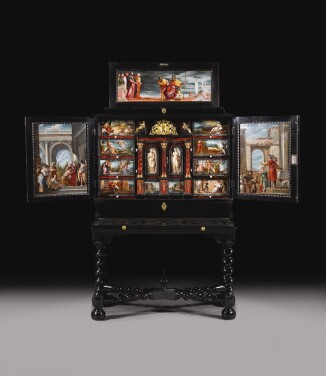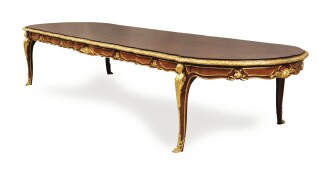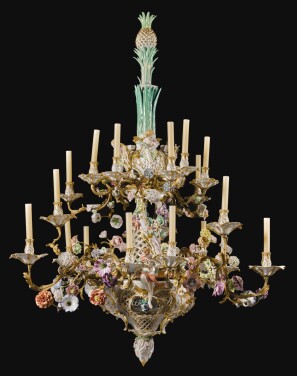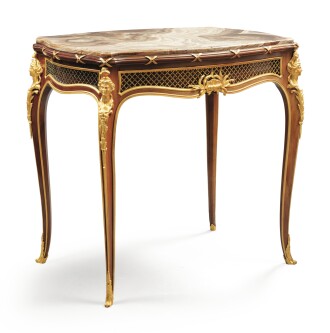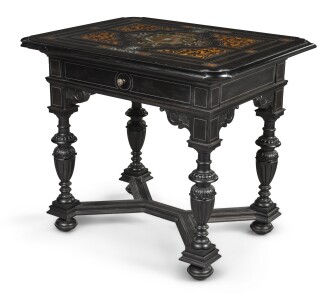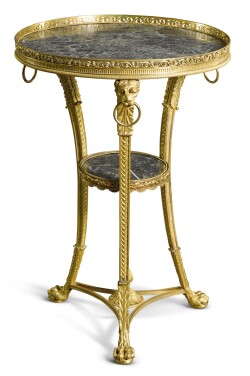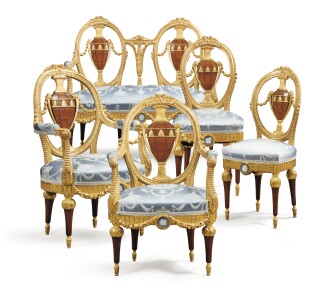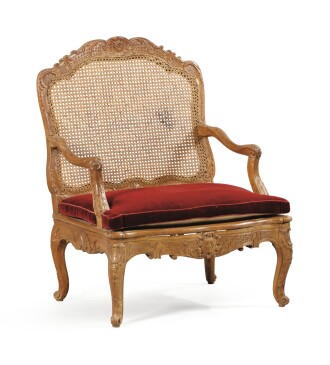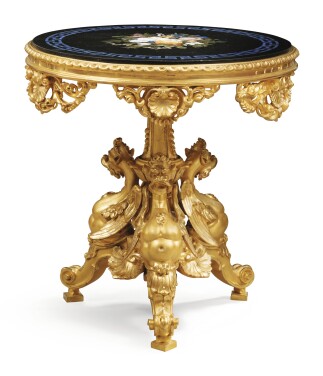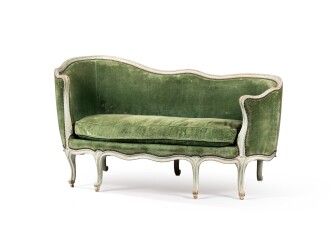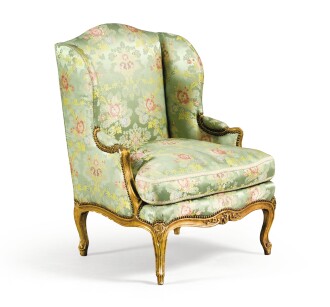-
French & Continental Furniture Consignment
Sotheby’s offers 18th-century French furniture and decorative arts, including mirrors, clocks and lighting such as candelabra, torchères and chandeliers as well as furniture and decorative arts from Continental Europe, including Germany, Italy, Sweden and Russia, from the 17th to the late 19th century.
In July 2019, Sotheby’s London presented the specially curated Treasures sale for the tenth consecutive year, featuring rare and sought-after masterpieces representing the pinnacle of decorative arts. Since its inception in 2010, Sotheby’s Treasures sales have achieved £108.5 million in 288 lots. Our 2019 Royal & Noble sale presented heirlooms from important European families, such as Bourbon-Parma, Oldenburg, Hohenzollern, Paternò- Castello, Sayn-Wittgenstein, Dukes of Hamilton and the Imperial Habsburg and Bonaparte families.
When you are ready to sell antique French Furniture, let Sotheby’s help you realise the highest price. To start, simply submit images and information to Sotheby's through our easy-to-use online estimate form. Our specialists will review your submission and issue preliminary estimates for items that can be included in our sales.
Find Out the Value of Your Furniture
Submit photos and information about your French & Continental Furniture and begin your complimentary estimate request.
Get an Estimate
European Furniture Consigned with Sotheby's
Get Started with an Estimate
Get Started with an Estimate
Get an Estimate

Frequently Asked Questions
- When is the best time to sell my French and Continental Furniture?Exceptional French and Continental furniture is in demand throughout the year. During Sotheby's French & Continental Furniture auctions, collectors, academics, museum curators and new buyers assemble to acquire fine antiques made in France and other European countries. Classic examples of offerings from the French Furniture category include styles such as Régence, Louis XIV, Louis XV, Louis XVI, Restauration, Directoire, Empire, Neoclassical, Rococo and Napoleon. There is no better time to consign antique French and Continental furniture with Sotheby’s. If you wish to sell antique furniture, simply send photographs, paperwork and other background information to Sotheby’s for a free auction estimate.
- How often does Sotheby's sell French Furniture and Continental Furniture?Annually, Sotheby’s London presents the Treasures sale, featuring rare decorative arts masterpieces. Along with single-owner sales, the French & Continental Furniture department also holds Sotheby’s Royal & Noble sale once a year in London, offering property with distinguished aristocratic provenances. Each spring and winter, the department presents a sale exploring the concept of style throughout the centuries, appealing to connoisseurs and decorators alike. Those sales include: Style: Private Collections in London, Style: Silver, Ceramics, Furniture in New York and Style: Mobilier, Objets d’art et Orfèvrerie in Paris. Sotheby’s, your most reliable resource for fine French and Continental furniture auction appraisal and consignment, achieves hammer prices well above our low estimates.
- Why is antique French Furniture highly collectible?Enthusiasts and connoisseurs buy and sell antique French and Continental furniture because it is exquisitely designed and constructed. French furniture makers created pieces for every possible function. Whether they were little tables or stylised armchairs, these distinct designs proliferated across European living rooms. Beginning in the 18th century, inventories and catalogues in England and America used French language to describe specific types of furniture. Since France was the epicentre for style and taste, other countries adopted French phrasing, and Sotheby’s still does so in our auction catalogues today. When you are ready to consign French furniture, Sotheby’s can help you realise the highest price.
- What are the best-selling types of French Furniture?Because this category is quite diverse, many types of French and other European furniture, art and decorative accessories are in demand. Sotheby’s top-selling French Furniture pieces include a bureau, table, chair, desk or cabinet in classic styles that were created during French furniture movements that include the Régence, Louis XIV, Louis XV, Louis XVI, Restauration, Directoire, Empire, Neoclassical, Rococo and Napoleon periods.
More information on how to sell with Sotheby's
Sotheby’s is your best resource to buy and sell French furniture and consign Continental furniture in rare, collectible styles such as Régence, Regency, Louis XIV, Louis XV, Louis XVI, Restauration, Restoration, Directoire, Empire, Neoclassical, Rococo and Napoleon from highly collectible French furniture and ormolu makers such as BVRB, Dubois, Louis Delanois, Jean-Henri Riesner, David Roentgen, Nicholas Petit, Lacroix, Tilliard, Michel Cresson, Saunier, Latz, Pierre Roussel, RVLC, Criaerd, Delorme, Etienne Avril, Adam Weisweiler, Canabas, Georges Jacob, Jacob et Freres, Jean-François Leleu, Martin Carlin, Séné, Pierre Garnier, Carpentier, Pierre Denizot, Charles Topino, Pierre-Philippe Thomire, Andre-Charles Boulle, Pierre Gouthière, François Rémond, Jacques Caffieri and Saint-Germain.

